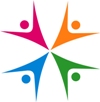
Menu
SHEILA WILKIN
Traducción e Interpretación—Translation and Interpretation
Menu

SHEILA WILKIN
Traducción e Interpretación—Translation and Interpretation
A Beginner’s Guide to Interpretation
What is interpretation?
People often ask us: What’s the difference between interpretation and translation? In a nutshell, translation is the conversion of written text from one language to another and interpretation is the conversion of speech from one language to another. If you would like to learn more about our translation services please visit our translation page. Return to the Interpretation page.
Determining your event requirements
During our initial contact with you we will ask you questions about:
Based upon this information we will develop a proposal letting you know what specific type of equipment we will need for your event, how many individual units the participants will need, and how many interpreters you will need for your event.
The typical equipment that we use at an event includes:
In the proposal, we ensure that we are providing all of the equipment you will need. Since we have worked in the majority of the venues in Guatemala City, our technicians are familiar with any special requirements that each hotel or meeting room might need.
Our technicians will usually arrive the day before the event to set up and test the equipment. If the event location is not available the day before, the technician will arrive several hours in advance to set up and test equipment.
How you can help us do the best job at your event?
Although we’ve worked at many different types of events covering many different themes, each organization has its own specific terminology. If you can send us literature about the event—or background information about the theme—then we can study your organization’s terminology to make sure that we are consistent with your needs.
Furthermore, if the speakers are presenting PowerPoint presentations, a copy of the presentation is very useful. We can study it in advance, and also follow it during the presentation on our laptops in the booth because from the back of the room, the projected presentations are often too distant to read.
How do Interpreters Work?
Interpreters work in three ways: consecutive interpretation, simultaneous interpretation and escort interpretation.
Simultaneous interpretation
Simultaneous interpretation is when we are sitting in the interpreter’s booth, listening to the speaker, interpreting what they are saying into a second language, and speaking into microphone so that members members of the audience can hear what the speaker is saying in the language of their choice—at the same time that the speaker is saying it.
Consecutive interpretation
Consecutive interpretation is most typically used in a setting without equipment. An example could be a short office meeting where a visitor from another country is making a presentation. The visitor would speak for 30 seconds, then pause, and the interpreter will translate what the speaker has said into the second language. In other words, they take turns.
Escort interpretation
This type of interpretation is used when accompanying visitors who may be attending a number of meetings in Guatemala City at different organizations, or be visiting a number of projects in the rural interior of the country. Escort interpretation can simplify equipment needs and can also facilitate interpretation in more casual and spontaneous meetings.
Conference interpreting
In a conference setting, where we are working all day long, we work as a team of two interpreters. Interpreting is very demanding, and so we alternate every 30 minutes between the interpreters. On large projects—such as multi-room conferences—we work with a larger team of interpreters—many of the same ones that we’ve worked with for 30 years—who each have their own specialized and unique skill sets.
Contact us
Please consider contacting us about your next interpreting event. Our clients, who are from countries throughout Latin America, North America and Europe, regularly express how pleased they are with the clarity and expertise of our interpreting. We look forward to hearing from you. Return to the Interpretation page.
Copyright © 2009-2020, Sheila Wilkin. All rights reserved.
Privacy Policy and Cookie Policy